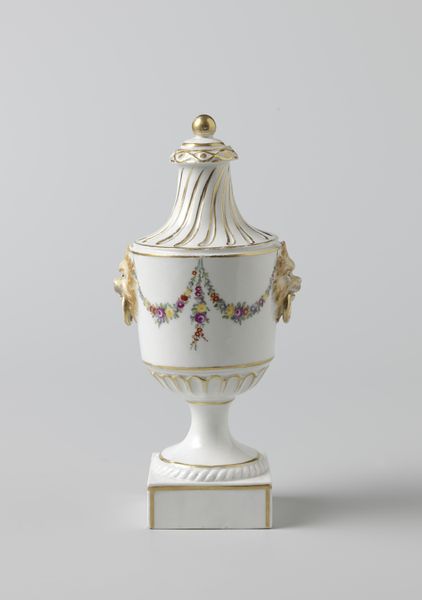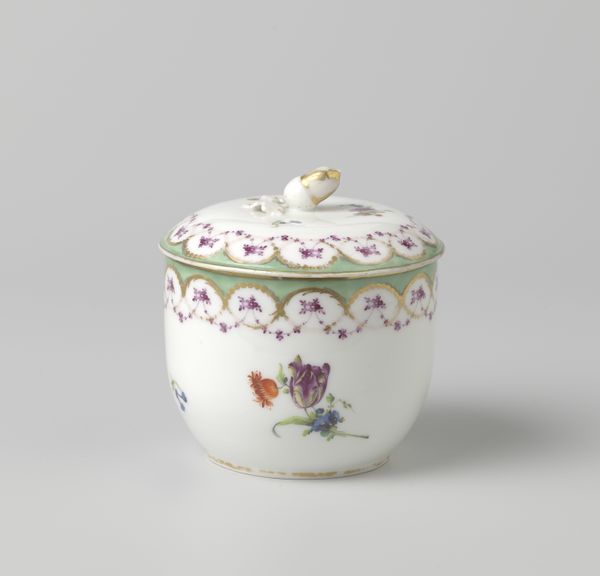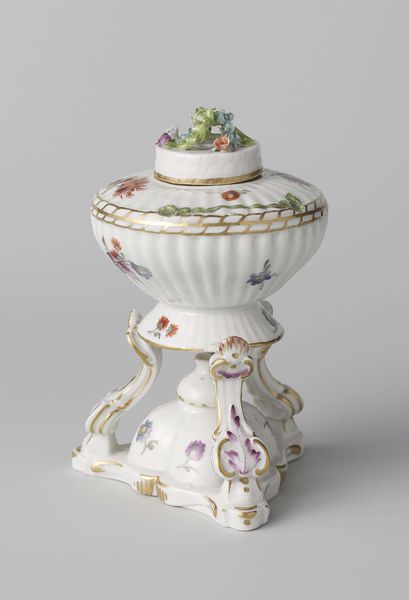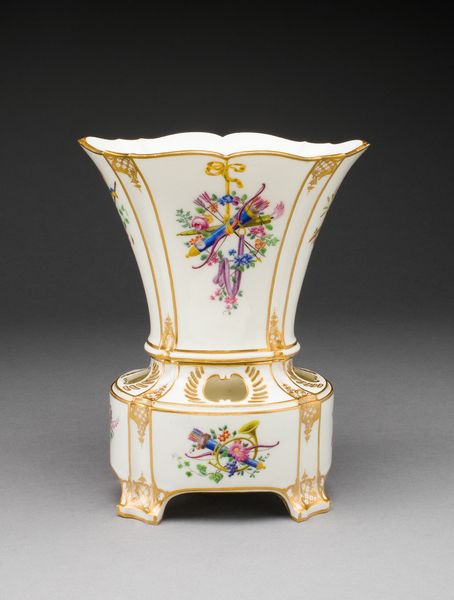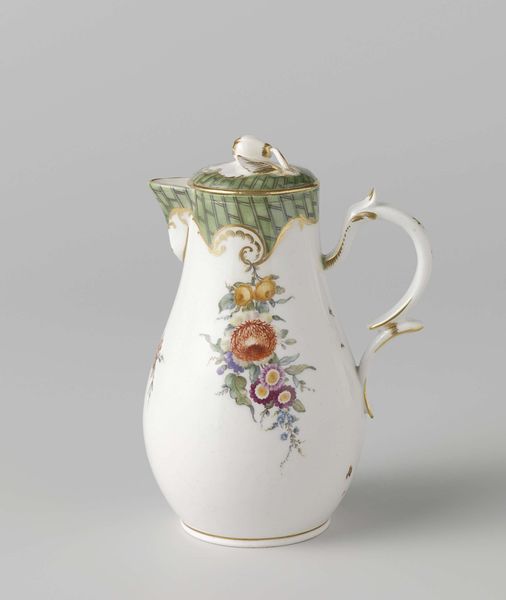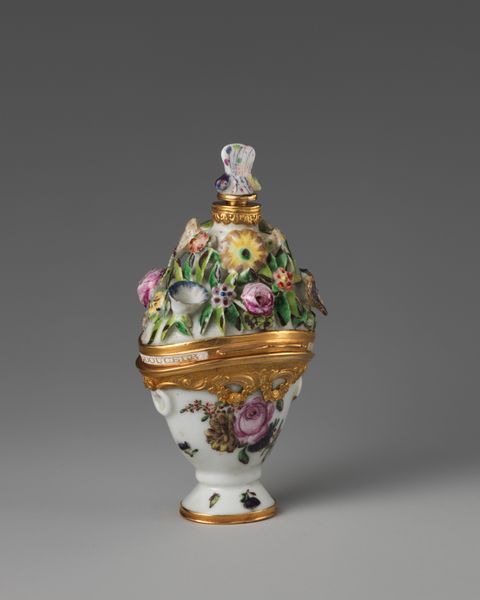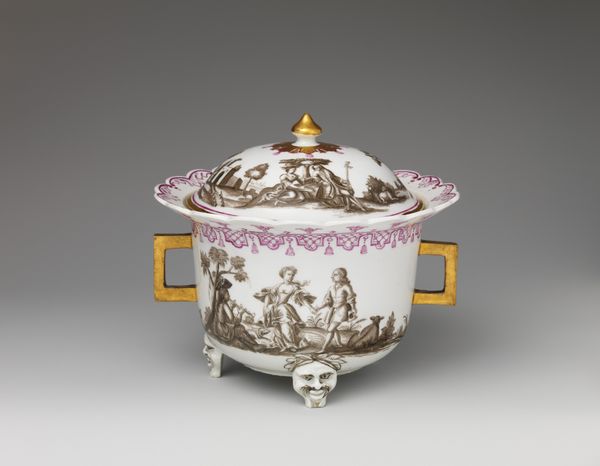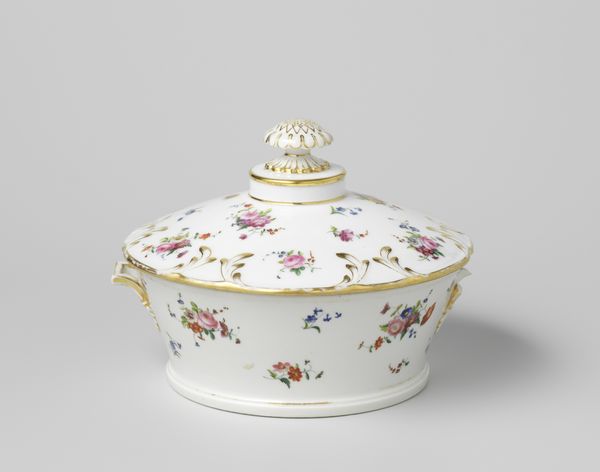
Dimensions: height 12.3 cm, length 7.5 cm, width 5 cm
Copyright: Rijks Museum: Open Domain
Curator: What strikes me immediately is its delicate fragility, almost like a musical box rendered in porcelain. Editor: Indeed. What we’re looking at is a porcelain tea caddy, crafted around 1775 to 1778 at the Loosdrecht porcelain factory. You can see it on display here at the Rijksmuseum. It’s adorned with both floral motifs and a rather unique ladder pattern. Curator: Ladder pattern? You mean the geometric design on the lid that looks like a stylized bamboo screen? It's whimsical. It makes me think of tiny doors and hidden garden secrets. Editor: It’s so characteristic of the Rococo era—playful, ornamental. But look closer. Porcelain, like this one, gained significant value during a rise in global trade and colonialism in the 18th century, often exploiting labor and resources of other nations. Can we separate its aesthetic appeal from that reality? Curator: Absolutely, and it also opens the door to the economic conditions for wealthy Europeans and the commodification of tea itself at the time. The paintings of the flowers appear at first glance to be purely decorative. Is there something to be said about what it means to consume flowers that also participated in the symbolic representation of the feminine within patriarchal constraints? Editor: It's complex, isn't it? Here is a container to hold a plant consumed daily, both connected with women in very different cultural contexts. And beyond that, tea ceremonies in many societies are tied to traditions of hosting guests and of spiritual retreat, adding a deep history that cannot be missed when we see something like this, which may reduce all of that meaning into the sphere of elite status and luxury. Curator: Ultimately, an object like this acts as a cultural marker, reflecting the artistic tastes, social norms, and yes, the problematic power structures of its time. Examining those interwoven threads feels crucial. Editor: Precisely, while admiring the object's craft, reflecting on it and discussing how such an everyday object can connect to the colonial implications helps to appreciate the significance in an institutional setting like this.
Comments
No comments
Be the first to comment and join the conversation on the ultimate creative platform.



